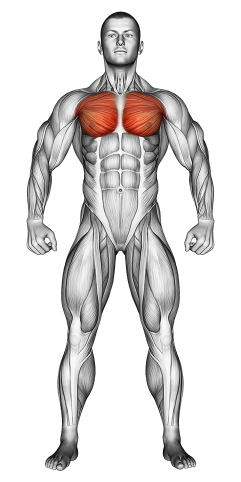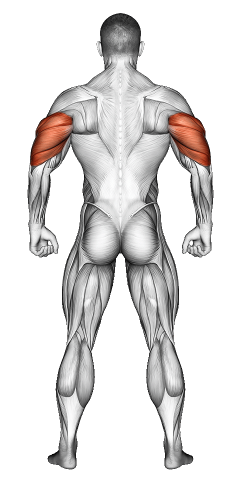Dumbbell Flys: Video Tutorial & Exercise Guide

Written By: Claude Michael
Updated: Oct 13, 2024
| Workout | Dumbbell Flys |
| Primary Muscle Group | Chest |
| Secondary Muscle Group | Shoulders, Triceps |
| Equipment Required | Dumbbell |
| Force Type | Push |
| Mechanics | Isolation |
| Exercise Type | Strength |
| Difficulty | Beginner |
Dumbbell Flys: Video Tutorial & Exercise Guide
- 1.Dumbbell Flys: Muscle Groups
- -1.1Primary Muscle Group
- -1.2Secondary Muscle Group
- 2.Dumbbell Flys: Step-by-Step Guide
- 3.Dumbbell Flys: Overview
- 4.Dumbbell Flys: Benefits
- 5.Dumbbell Flys: Pro Tips & Advanced Techniques
- 6.Dumbbell Flys: Progression Plan
- 7.Dumbbell Flys: Frequently Asked Questions (FAQs)
Dumbbell Flys: Step-by-Step Guide
- Step 1: Lie flat on a bench with a dumbbell in each hand. Hold the dumbbells above your chest with your arms extended but with a slight bend in your elbows. Your palms should be facing each other.
- Step 2: Engage your core and keep your feet flat on the ground. Slowly lower the dumbbells out to your sides in a wide arc, maintaining the slight bend in your elbows.
- Step 3: Lower the weights until your chest is fully stretched, but ensure you don’t go too far to avoid shoulder strain. Your arms should form a “T” shape at the lowest point.
- Step 4: Squeeze your chest muscles as you bring the dumbbells back up in the same arc, stopping once the dumbbells meet above your chest.
- Step 5: Repeat for the desired number of reps, focusing on controlled movements and muscle activation throughout the exercise.
Dumbbell Flys: Overview
Dumbbell Flys are a popular isolation exercise that targets the chest muscles, specifically the pectoral muscles. By focusing on the stretching and contracting motion of the chest, this exercise helps to build muscle definition and strength in the upper body. It is commonly performed on a flat bench but can also be done on an incline or decline bench to target different areas of the chest.
This movement is ideal for those looking to enhance the shape and definition of their chest muscles, making it a staple in many strength training and bodybuilding routines.
Dumbbell Flys: Benefits
Dumbbell Flys primarily target the pectoral muscles, helping to build chest strength and muscle definition. The wide range of motion involved in the fly helps to stretch and contract the chest muscles fully, promoting hypertrophy (muscle growth).
This exercise also engages the shoulders and stabilizer muscles in the upper body, promoting better shoulder stability and control. It’s an excellent complement to pressing movements like the bench press, as it helps improve muscle balance and symmetry.
Dumbbell Flys are also great for improving flexibility and mobility in the chest and shoulder area, making it beneficial for both aesthetic and functional strength.
Dumbbell Flys: Pro Tips & Advanced Techniques
Keep a slight bend in your elbows throughout the movement to avoid putting too much strain on your shoulder joints. Focus on the stretch at the bottom of the movement but avoid going too low to prevent injury. For an added challenge, perform the exercise on an incline bench to target the upper chest. Ready to build a fuller chest? Let’s fly!
Dumbbell Flys: Progression Plan
Beginner
Intermediate
Advanced
Dumbbell Flys: Frequently Asked Questions (FAQs)
What muscles do Dumbbell Flys target?
+Dumbbell Flys primarily target the chest muscles (pectorals), but they also engage the shoulders and stabilizing muscles in the upper body.
Are Dumbbell Flys better than Bench Press for chest development?
+Dumbbell Flys are great for isolating the chest muscles, while the bench press is a compound exercise that also works the triceps and shoulders. Both exercises are effective for chest development and can complement each other in a workout routine.
How can I make Dumbbell Flys more challenging?
+To increase difficulty, use heavier weights or slow down the lowering phase to increase time under tension. You can also perform the exercise on an incline or decline bench to target different parts of the chest.
How often should I include Dumbbell Flys in my routine?
+Include this exercise 2-3 times per week as part of your chest workout. It pairs well with pressing exercises like the bench press and push-ups for a complete chest routine.
What common mistakes should I avoid?
+Avoid lowering the dumbbells too far, as this can place unnecessary strain on your shoulder joints. Keep a slight bend in your elbows and control the movement throughout to maximize muscle activation.
Share
Don’t Wish for It, Work for It – Join the FlexXP Newsletter Today!
Thank you for signing up for the FlexXP Newsletter!
This site is protected and the Google Privacy Policy and Terms of Service apply.


